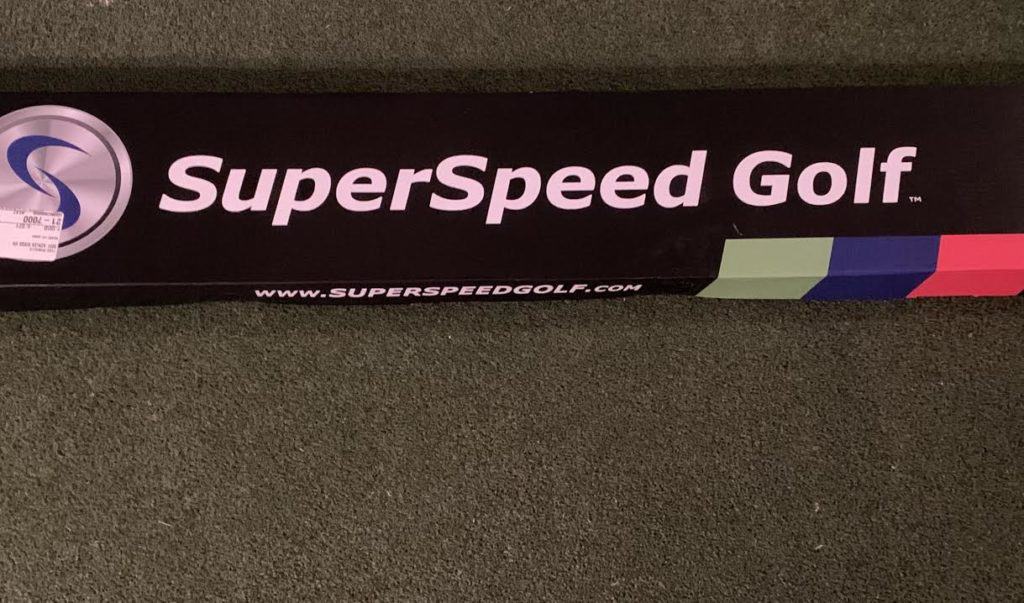Most golfers are searching for the perfect golf swing.
We all want our swing to look great, have the perfect tempo and produce the consistency of results every time we play.
We head to the driving range or to the course in hopes of finding that perfect swing thought or swing feel that is going to be “our secret.”
Many are willing to spend whatever amount of money it takes in lessons, swing aids, memberships, etc. that will give us that edge and the mental comfort as we head to the course and play our round.
Is there really such a thing as the perfect swing?
While I don’t believe there is one perfect swing, I believe with the right time, drills and effort we can develop a swing that becomes our perfect swing based on our body type, age, ability level. One that we can be proud of and take it to the course.
The problem is that many people are searching for the “perfect looking” swing vs the “perfect” swing.
How To Have The Perfect Golf Swing
The best golf swings are able to control the low point, have a consistent start line and curve of the ball and have plenty of distance to play the course. When golfers can focus on these three fundamentals, they can build a perfect swing for their game and their golf journey.
Three Keys To Help You Build the Perfect Golf Swing
- Control Your Low Point
- Control Your Start Line and Curve
- Have Enough Distance To Play The Course
Of course there is always the short game that signifncantly impacts our ability to score at our lowest potential. However, that topic is for another day and let’s zero in on the three ways to build these keys listed above.

Key #1: Control Your Low Point
Why Is This Important
The first basic in all great golf swings is that they are able to control the low point, which leads to consistent ball striking. If you watch the worst golfers, they can’t control their low point more than 50% of the time, which leads to thin shots, fat shots and complete mishits.
On the other hand, the best golfers consistently control their low point, which leads to distance control, start line control and the curve of the ball. The golfer doesn’t have to stress over solid contact because after so many reps and practice, it becomes second nature.
How To Build This Skill
Practice the Low Point Control Drill
- Paint a 2-3 yard long line with some yard paint.
- Place the wiffle ball on the line.
- The goal is to have your divot start just on the target side of your line.
- Go ahead and hit shot after shot, working on controlling your low point and your entry into the ground.
- Assess your success rate out of 20 times and write it down.
- Complete this drill daily for several weeks and see if your game improves at the course.
If you start to hit the ball poorly at any point on your golf journey, return to this drill and keep it simple.
One quick tip: if you are struggling to control your low point, go ahead and set up with 60% of your weight on your front leg. Keep your head centered without a big shift off the ball and turn more around your front leg.
This will help keep your centers in place and allow you to control the low point. Many golfers struggle with the low point because they don’t get their weight back to their front side early enough and end up casting the club.
Key #2: Control Your Start Line and Curve
Why Is This Important
You will often hear the golf experts preach golf course management. They want the golfer to plot their way around the course and play the right angles and percentages. This is only possible if you know where the ball is going to fly to.
There is nothing more frustrating in the game of golf than standing there not having a clue where the ball is going to start and which way it is going to curve. This leads to tension filled golf swings, actually impacting the low point control and the consistency of the strike.
When a golfer can start the ball on his or her intended line more than 70% of the time, managing the game and playing the percentages becomes a possibility. If you have ever played golf with someone that shot around par, you will notice that they might not hit a ton of spectacular shots, but you will notice that they play the percentage and keep themselves out of trouble. This doesn’t mean hitting hybrid off every tee, but instead they can control their misses and leave their average shots in a decent location.
Resource: Draw vs Fade in Golf
How To Build This Skill
Stock Shot Drill
- Set up an alignment stick 6-8 yards down your target line in front of the ball.
- If you have one, set up a second alignment stick 2-4 feet right of that target line
- Go ahead and see how many swings out of 10 you can get the ball to start to the right of the first of the alignment stick. The goal here is to progress to 7 out of 10.
- Practice this drill everytime you hit golf balls.
Resource: Full post on what is a stock shot in golf
The key to golf is being able to control your contact and your start line.
Could you imagine a round of golf where you strike the ball solid and 7 times out of 10 the ball starts down your intended target line? This is the ultimate in golf and helps you start to focus on your course management.
You will gain confidence and the consistency that we all seek!
The golfer that can control the low point in their swing and start the ball on the intended line a high percentage of the time will find themselves making plenty of pars. Assuming an above average short game, they are well on their way to becoming a scratch golfer.
To accelerate the process, we can head to the third key.
Key #3: Have Enough Distance To Play The Course
Why Is This Important
If you have ever golfered with the person that is super long with the driver, you will see the advantage distance can bring. While not an essential element to becoming a scratch golfer or even a single digit handicap golfer, speed does help. There is a reason so many of the tour professionals are training to increase their swing speed.
The analytics are pretty clear! The further you can hit your driver, the shorter approach shot you have left. Not only does this lead to more greens hit in regulation, but it also provides a closer proximity to the pin on average. This leads to more made birdie putts and lower scores.
How To Build This Skill
I believe many used to believe, well this is just how fast I can swing.
Recent training tools have started to change many minds. We have seen many of the professional golfers get longer and longer with their tee shots as a result of additional swing speed. You will find many touring pros using the SuperSpeed System, which I highly recommend.
SuperSpeed Golf is one option to increase your swing speed through a science based overspeed training approach. In simple terms, you train by swinging a lighter club (20%) faster than you swing your driver. Over time, by training at a higher speed, your mind and body feel safe to swing that fast with your normal driver, resulting in an increase in driver swing speed.
The SuperSpeed System provides 3 different weighted sticks and takes the golfer through a training protocol every other day for about 15 minutes. The golfer can expect to see a 5-8% increase in swing speed, resulting in 20-30 yards for most golfers. The great news is that the 5-8% can be expected as early as the first training session. The additional speed will become more permanent after about 30-60 days of training.
My own experience has been an increase of 7-10 miles per hour on average from between 98-101 all the way up to 106-109. My goal is to hit the PGA Tour average of 113 mph in the coming months. I will continue to train every other day and watch in amazement as I am hitting drivers longer now than ever before!
Phil Mickelson has been known to increase his swing speed in the past year or so and is close to 120 miles per hour in his swing speed. There are potential results for golfers of all ability levels and age!
Check current price on SuperSpeed Golf System, here!
| Original Swing Speed | After 4-6 Weeks | New Carry Distance | Total Distance |
| 95 | 102 | 245 | 265 |
| 100 | 108 | 259 | 279 |
| 105 | 113 | 271 | 291 |
| 110 | 118 | 283 | 303 |

BONUS TIP: Practice The Short Game
If you are more concerned about shooting lower scores than perfecting the swing, spend 30 minutes a day working on the short game. This can help you reduce your score significantly in the quickest amount of time. Assuming you can keep the ball in play and be around the green in regulation, shooting in the 70s can come really quick when you add up the ability to keep the ball in play, be around the green in regulation, and save part around 50% of the time.
Resource: Is it better to practice or play golf?
Here is my favorite game:
Up and Downs
One of the secrets to breaking 80 in golf is to be able to get up and down from around the green in 2 shots or less 50% of the time. This is assuming you are in the 10-20 yard range from the role. The current leader on tour does this at an 80% success rate.
The great part about chipping and putting is it doesn’t take high end club head speed or expensive equipment or lessons, but rather a simple technique and lots of practice. The game here is to take one ball and pick a spot from off the green. Go ahead and hit the chip shot and then see if you can make the putt. Pick 10 different spots around the green and track how many times out of 10 you were able to get up and down in 2 shots or less.
You can also play a competition against another person at the green and see who can get up and down the most times out of 10 or play some match play. Once again the little competition will help prepare you for the actual course and the pressure that you may face.
Resource: Golf Practice Games (Top 22)

Take Action – What You Can Do Today to Get Better
What does this mean for you? I believe in the following recipe to get better:
1 – Improve your motion in the golf swing by identifying a golf instructor. Here are some options:
Here is a list of golf instructors that we have reviewed:
2 – Train to swing faster and improve your swing speed. Here are some options:
Looking to gain more Speed and Distance in your swing. Two Options:
3 – Understand course strategy and work to break through your next barrier. Here is a series on breaking through:
We have provided guides on how to break 100, 90, 80 and 70. Check out more below, if interested.
4 – Practice Frequently
Did you know that I build a golf simulator in my garage and have played over 500 rounds of golf on my SkyTrak system? It has been a game changer and one worth checking out. Here are some of my other posts on golf simulators frequently asked questions:
- Is a Golf Simulator Worth It?
- How to Build a Golf Simulator?
- What is the Best Golf Simulator?
- Golf Simulator Accessories?
- How to Build a Golf Simulator for under $7000
- Top 11 Reasons to Buy a SkyTrak
- How to Build a Golf Simulator for Under $1000
- Why Build A Golf Simulator?
- What Space is Needed?
- Can A Golf Simulator Improve My Game?
- How Much Does A Golf Simulator Cost?
- Don’t Forget to Check out our 15 best golf swings of all time.
I am an amateur golfer on a journey to get better, enjoy the game as often as possible and share my passion and knowledge with others. I have coached high school golfers at a high level and have a great passion for the game and want to give back. I enjoy learning about the golf swing and am currently studying to be a certified professional golf instructor. Join me in our journey to get better everyday.

